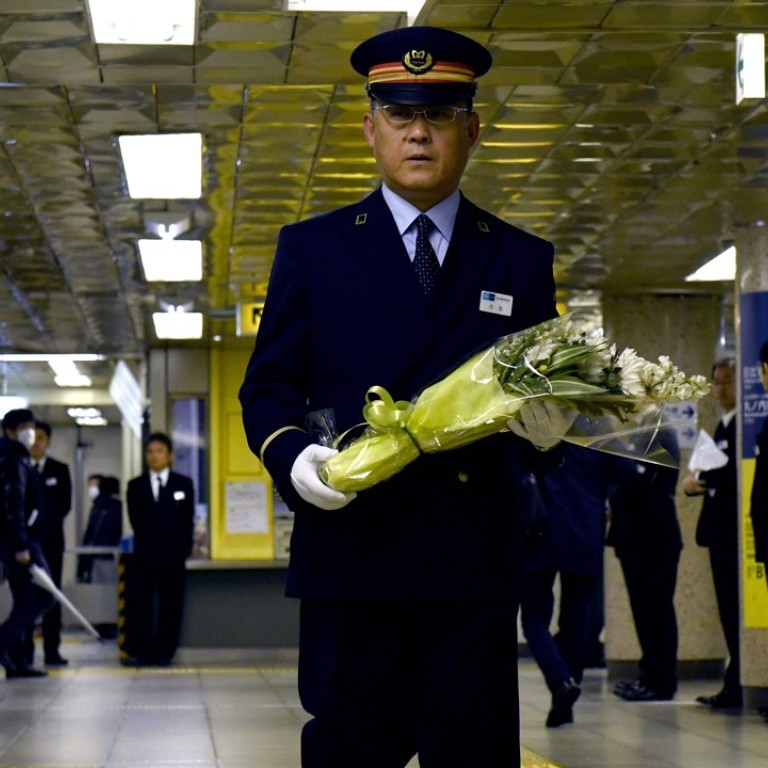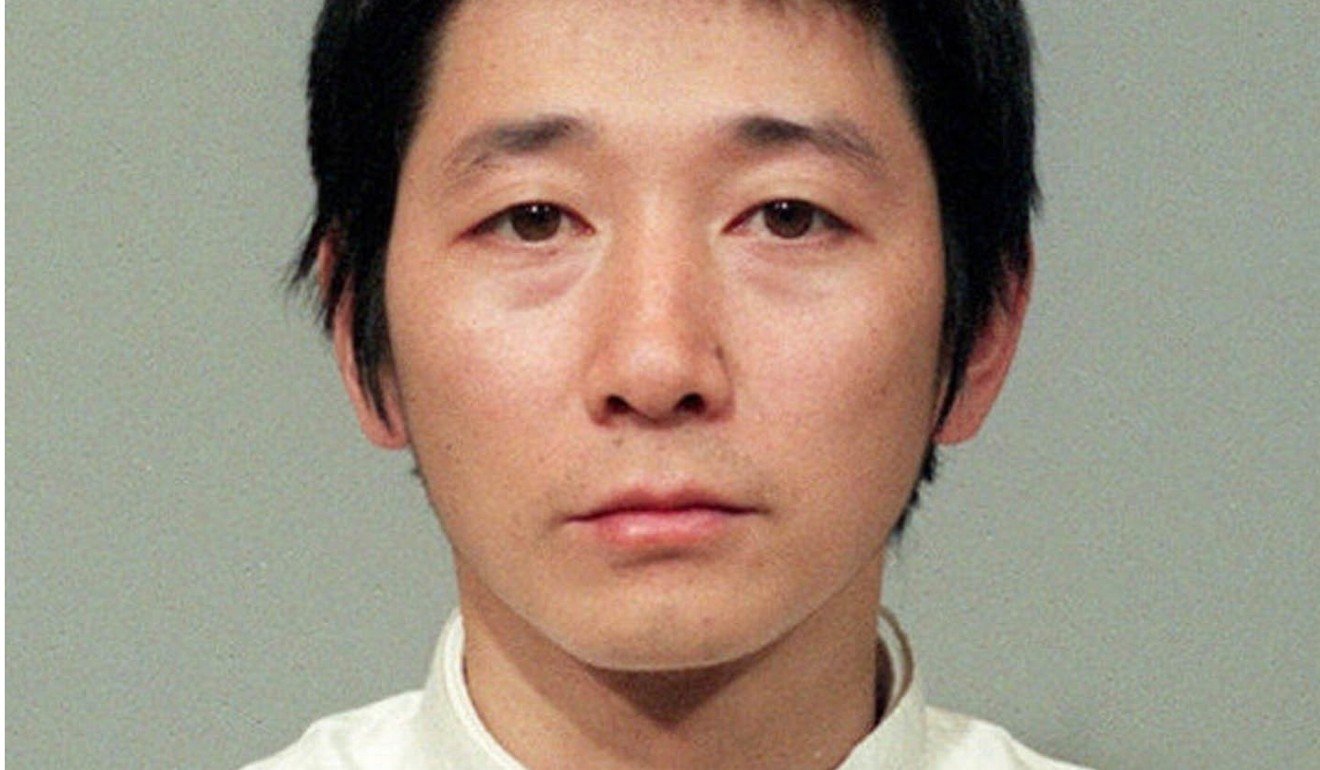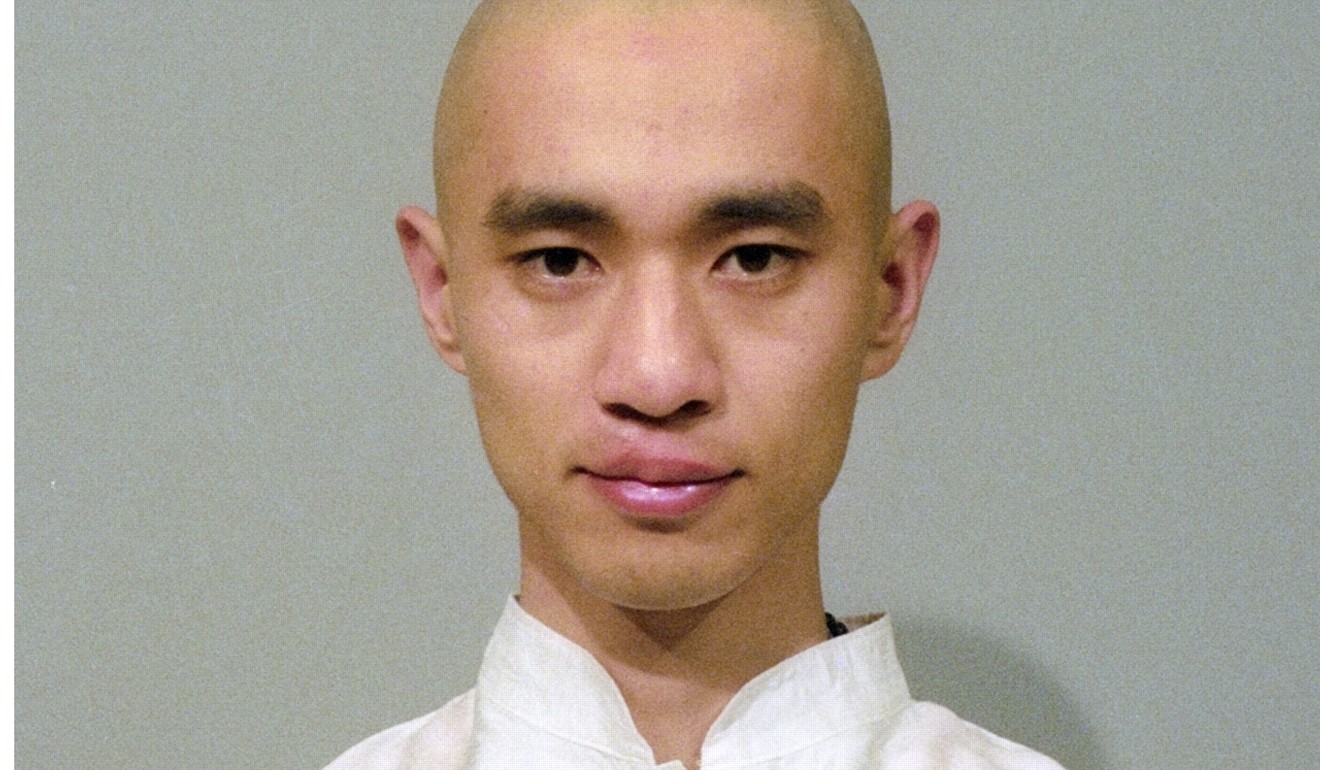
Japan marks anniversary of Tokyo subway gas attack as 13 cult members brace for word they’ll be sent to the gallows
Tuesday marks 23 years since members of the Aum Shinrikyo cult punctured plastic bags to release sarin nerve gas inside subway cars, sickening thousands and killing 13
Japan on Tuesday marked the 23rd anniversary of a deadly sarin attack on the Tokyo metro, as speculation grows that members of the cult behind it could soon be executed.
At a solemn ceremony at Kasumigaseki station, one of the targets of the 1995 attacks which is surrounded by key government buildings, Tokyo subway staff gathered to observe a moment of silence and offer flowers.
Thirteen people were killed and thousands more injured when members of the Aum Shinrikyo cult dumped bags of sarin on packed rush hour trains, piercing the pouches with sharpened umbrella tips before fleeing.
The nerve agent caused horrendous deaths and injuries, and prompted mass panic, turning Japan’s busy capital city into something resembling a war zone.
Passengers streamed out of stations vomiting, coughing and struggling to breathe, with emergency services administering life-saving treatment by the side of the road.

Ambulances screamed through the streets, and helicopters landed on major roads to assist the evacuation of those affected.
On that day, Tokyo Metro worker Kazumasa Takahashi unwittingly picked up a punctured packet of the nerve gas from the floor of one of the trains at Kasumigaseki station.
He and another colleague died.
“I came here today, with the same feeling I have every year,” his widow Shizue told reporters at the station after paying tribute to her late husband.
“The health of some victims is deteriorating and some families are also going through a tremendously difficult time,” she said, adding that the passage of time had not healed the pain suffered by victims’ families.

After years of legal proceedings, the prosecution of 13 Aum Shinrikyo members on death row for the attacks and other crimes finally concluded in January, clearing the way for their execution.
The transfers have prompted speculation that cult leader Shoko Asahara and the 12 of his followers on death row could soon be executed, though there has been no official indication.
Japanese authorities usually announce executions after the fact, with no advance warning.



Even prisoners sent to the gallows are not notified until guards come to their cells in the morning. After a chat with a chaplain, a last bite or smoke, the prisoner is taken to the gallows.
If all subway attack convicts are hanged, it would be largest number executed on a single day in Japan’s modern history.
Japan on January 24, 1911, hanged 11 political prisoners who allegedly plotted to assassinate the emperor.
Shizue Takahashi said the fast speed of transfers initially startled her, but stressed that the executions must proceed in due course.

“The death penalty came as the result of long trials, and it has entered the next phase,” said Shizue Takahashi.
“It is not at a phase where I can say or do anything about it. I feel that steps should be taken in accordance with the law.”
Some experts however oppose the executions – with the exception of Asahara – saying authorities risk transforming the other 12 into “martyrs” that will help the Aum’s successor cults to recruit new members.
Founded in 1984, the group attracted many young people, even graduates of top universities, whom Asahara hand-picked as close aides.
The cult amassed an arsenal of chemical, biological and conventional weapons to carry out Asahara’s escalating criminal orders in anticipation of an apocalyptic showdown with the government.
The cult claimed 10,000 members in Japan and 30,000 in Russia. It has disbanded, though nearly 2,000 people follow its rituals in three splinter groups, monitored by authorities.
Additional reporting by Associated Press

.png?itok=arIb17P0)